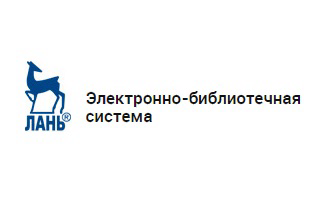| УДК 622.245.1 | DOI: 10.21440/0536-1028-2021-8-15-23 |
Research objective is to determine the results of ice impact on the polymer operating string and adjacent rock mass in the most probable type of computational model that considers the asymmetry of the load imposed by water refreezing in the casing string annulus. The solution to this problem makes it possible to consider the possibility of using polymer pipes in permafrost.
Research relevance is conditioned by the known facts of water freezing in the casing string annulus at low temperatures. In practice, water freezing causes significant deformations and damage operating strings and pipe joints creating emergency situations that can disrupt flow processes.
Research methods. The finite element method is used to calculate the polymer operating string, placed in the rock mass. The proposed method considers the asymmetry of the load imposed on the pipe and uses a lot of parameters to create the computational model. The method makes it possible to include pipe, ice and adjacent rock mass in the computational model considering their properties.
Research results establish the degree of non-uniform loading effect on pipe’s deformation, strength and stability. Pipe calculation results for the conditions of symmetric and asymmetric compression by ice are compared. The results of using a nonlinear model of rock are considered. A significant impact of the composition of rocks around the well has been revealed. The conditions have been determined in which polymer pipes can bear the load during refreezing under asymmetric arrangement of the pipe in the well.
Keywords: ice compression; refreezing; permafrost; well; operating string; loading asymmetry
REFERENCES
1. Ivanov A. G., Solodov I. N. Selection of casing material for in-situ leach wells. Gornyi zhurnal =
Mining Journal. 2018; 7: 81–85. Available from: doi: 10.17580/gzh.2018.07.16 (In Russ.)
2. Stovmanenko A. Iu., Anushenkov A. N. Perspectives of using pipelines from polymer materials
during transportation of cast packing filled mixtures. Izvestiia Uralskogo gosudarstvennogo gornogo
universiteta = News of the Ural State Mining University. 2016; 4(44): 68–71. Available from: doi:
10.21440/23072091-2016-4-68-71 (In Russ.)
3. Khrulev A. S. Well-drilling hydraulic technology: issues and options. Vestnik Rossiiskoi akademii
estestvennykh nauk = Bulletin of the Russian Academy of Natural Sciences. 2013; 5: 51–54. (In Russ.)
4. Makariev L. B., Tsaruk I. I. Mineral resource base of the uranium of the southern margin of the
Siberian Platform. In: Uranium: geology, resources, and production: Proceedings of the 4th Internat.
Symposium, 28–30 November 2017. Moscow: VIMS Publishing; 2017. p. 60–61. (In Russ.)
5. Wang F., Song Z., Cheng X., Ma H. Patterns and features of global uranium resources and production.
Earth and Environmental Science: IOP Conf. Ser.: Institute of Physics Publishing. 2017; 94: 1–7.
6. World distribution of uranium deposits (UDEPO) with uranium deposit classification. IAEA,
Vienna, 2009. Printed by the International Atomic Energy Agency in Austria. 2009. 126 p.
7. Magnin F., Etzelmuller B., Westermann S., Isaksen K., Hilger P., Hermanns R. Permafrost
distribution in steep rock slopes in Norway: measurements, statistical modelling and implications for
geomorphological processes. Earth Surface Dynamics. 2019; 7: 1019–1040. Available from: https://doi.
org/10.5194/esurf-7-1019-2019
8. Westermann S., Ostby T. I., Gisnas K., Schuler T. V., Etzelmüller B. A ground temperature map of
the North Atlantic permafrost region based on remote sensing and reanalysis data. The Cryosphere. 2015;
9: 1303–1319.
9. Obu J., Westermann S., Bartsch A., Berdnikov N., Christiansen H., Dashtseren A., Delaloye R.,
Elberling B., Etzelmuller B., Kholodov A., Khomutov A., Kaab A., Leibman M., Lewkowicz A., Panda S.,
Romanovsky V., Way R., Westergaard-Nielsen A., Wu T., Yamkhin J., Zou D. Northern Hemisphere
permafrost map based on TTOP modelling for 2000–2016 at 1 km2 scale. Earth-Science Reviews. 2019;
193: 299–316. Available from: https://doi.org/10.1016/j.earscirev.2019.04.023
10. Tao J., Koster R., Reichle R., Forman B., Xue Y., Chen R., Moghaddam M. Permafrost variability
over the Northern Hemisphere based on the MERRA-2 reanalysis. The Cryosphere. 2019; 13: 2087–2110.
Available from: https://doi.org/10.5194/tc-13-2087-2019
11. Radin A. I. The distinguishing features of wells with TDS in the permafrost zone. In: New ideas in
the Earth sciences: Proceedings of the 14th Internat. Sci. Pract. Conf. Moscow: RSUH Publishing. 2019.
4. P. 293–294. (In Russ.)
12. Zverev G. V., Tarasov A. Iu. Calculation and analysis of the influence of permafrost on well no. 338
fixing of Vankorskoe field during operation. Vestnik Permskogo natsionalnogo issledovatelskogo
politekhnicheskogo universiteta. Geologiia. Neftegazovoe i gornoe delo = Perm Journal of Petroleum and
Mining Engineering. 2013; 8: 41–51. (In Russ.)
13. Arsentiev Iu. A., Nazarov A. P., Zabaikin Iu. V., Ivanov A. G. Calculation of polymer operating
strings for the conditions of the permafrost. Actual problems and prospects of economic development:
Russian and foreign experience. 2019; 21: 27–32. (In Russ.)
14. Kuznetsov V. G. Methods and technology for improving well lining durability in the permafrost
(problems and solutions): DSc in Engineering abstract of diss. Tyumen; 2004. (In Russ.)
15. Leonov E. G., Zaitsev O. Iu. Calculating phases content and pressure at aqueous media freezing at
the casing string annulus and the tubing-casing annulus at freezing. Stroitelstvo neftianykh i gazovykh
skvazhin na sushe i na more = Construction of Oil and Gas Wells on Land and Sea. 2005; 1: 10–16.
(In Russ.)
16. Stetiukha V. A., Zhelezniak I. I. Methodology for calculating the stability of the polymer operating
string in permafrost. Zapiski Gornogo instituta = Journal of Mining Institute. 2020; 241: 22–28. Available
from: doi: 10.31897/PMI.2020.1.22 (In Russ.)
17. Khademi Zahedi R., Shishesaz M. Application of a finite element method to stress distribution in
burried patch repaired polyethylene gas pipes. Underground Space. 2019; 4(1): 48–58. Available from:
https://doi.org/10.1016/j.undsp.2018.05.001
18. Kamarainen J. Studies in ice mechanics. Helsinki: Helsinki University of Technology; 1993.
19. Bychkovskii N. N., Gurianov Iu. A. Icy construction sites, road, and crossings. Saratov: SSTU
Publishing; 2005. (In Russ.)
20. Rudov S. E., Shapiro V. Ia., Grigoriev I. V., Kunitskaia O. A., Grigorieva O. I. Mathematical
modeling of compacting process of the frozen soil under the influence of forest machines and logging
systems. Sistemy. Metody. Tekhnologii = Systems. Methods. Technologies. 2018; 3(39): 73–78. Available
from: doi: 10.18324/2077-5415-2018-3-73-78 (In Russ.)









